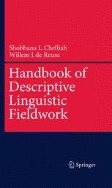Search
Search Results
-
An Overview of BabelNet and its API for Multilingual Language Processing
In this chapter we present BabelNet, a very large multilingual semantic network. We first describe the two-stage approach used to build it, namely:...
-
Building Multilingual Language Resources in Web Localisation: A Crowdsourcing Approach
Before User Generated Content (UGC) became widespread, the majority of web content was generated for a specific target audience and in the language...
-
Interchanging lexical resources on the Semantic Web
Lexica and terminology databases play a vital role in many NLP applications, but currently most such resources are published in application-specific...

-
Senso Comune: A Collaborative Knowledge Resource for Italian
Senso Comune is an open knowledge base for the Italian language, available through a Web-based collaborative platform, whose construction is in...
-
Web 2.0, Language Resources and standards to automatically build a multilingual Named Entity Lexicon
This paper proposes to advance in the current state-of-the-art of automatic Language Resource (LR) building by taking into consideration three...

-
LMF-aware Web services for accessing semantic lexicons
This paper demonstrates that Wordnet-LMF, a version of ISO LMF, allows us to effectively design and implement Web services for accessing WordNet-type...

-
An ontology for accessing transcription systems
This paper presents the design and implementation of the Ontology for Accessing Transcription Systems (OATS), a knowledge base that supports...

-
Automatic transformation from TIDES to TimeML annotation
Until recently, most systems performing temporal extraction and reasoning from text have focused on recognizing and normalizing temporal expressions...

-
Introduction: Languages and the Military: Alliances, Occupation and Peace Building
For those who participate in military campaigns, report on wars, or study the conduct and cultures of conflict, war is largely a...
-
Languages and Peace Operations
NATO forces were initially unprepared for the armed conflict in Bosnia-Herzegovina from March 1992, and struggled to meet the challenges of bringing...
-
Semi-automatic enrichment of crowdsourced synonymy networks: the WISIGOTH system applied to Wiktionary
Semantic lexical resources are a mainstay of various Natural Language Processing applications. However, comprehensive and reliable resources are rare...

-
A framework for traversing dense annotation lattices
Pattern matching, or querying, over annotations is a general purpose paradigm for inspecting, navigating, mining, and transforming annotation...
-
Multilingual language resources and interoperability
This article introduces the topic of “Multilingual language resources and interoperability”. We start with a taxonomy and parameters for classifying...

-
SemantiClean
In our research on using information extraction to help populate semantic web resources, we have encountered significant obstacles to...

-
Formal Structure of Sanskrit Text: Requirements Analysis for a Mechanical Sanskrit Processor
We discuss the mathematical structure of various levels of representation of Sanskrit text in order to guide the design of computer aids aiming at...
-
Grammar Customization
This paper presents the LinGO Grammar Matrix grammar customization system, a web-based service which elicits typological descriptions of languages...
-
Disambiguating Rhetorical Structure
Empirical studies of text coherence often use tree-like structures in the spirit of Rhetorical Structure Theory (RST) as representational device....
-
Native Speakers and Fieldworkers
Having decided what language to work on and having arrived at the field site, the fieldworker must find native speakers to work with. Here are seven...
-

